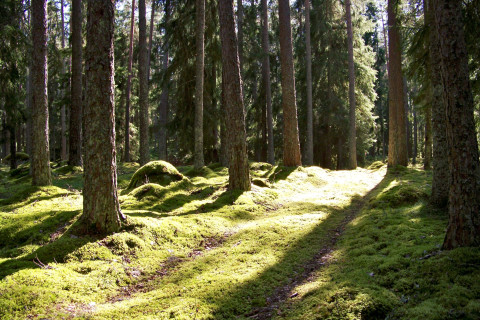The doctoral dissertation in the field of Radioecology will be examined at the Faculty of the Faculty of Science and Forestry at the Kuopio campus.
Soroush Majlesi, what is the topic of your doctoral research?
The field of study is radioecology, and the topic of my doctoral research is ‘’Radioecology for boreal ecosystems: studies on transfer processes and effects on wildlife’’. My dissertation focused on understanding the transfer of elements, relevant to radioactive waste and their toxicities in animals and plants of boreal ecosystems. Due to extensive use of nuclear power and mining operations, management of radioactive waste has been a great concern. Release of radionuclides from spent nuclear fuel and radioactive waste repositories due to poor management may pose a risk to the biosphere. Radionuclides released into the environment could be assimilated by different flora and fauna as parts of the food web. This study attempts to provide data to further develop radioecological modelling and to increase understanding of possible risks, associated with radioactive waste with particular focus on boreal ecosystems.
What are the key findings or observations of your doctoral research?
In general, data on transfer of elements, relevant to radioactive waste in boreal ecosystems is limited. Therefore, the findings of this work are important for radioecological modelling and for the biosphere safety assessment. This study introduced a novel approach to investigate the transfer of 14C from soil to plants, based on very large difference in 14C isotopic signature between old peat and atmosphere. Such naturally huge difference is rare in soil-plant system, which yields an ideal opportunity to track the proportion of soil-derived carbon against atmospheric carbon. This is particularly important in cases of release of radionuclides from spent nuclear fuel cycle and geological radioactive waste repositories such as accidents and unexpected scenarios.
Moreover, using isotopic techniques based on natural differences in the environment would avoid risks associated with artificially labeling techniques. The data showed reliability of the approach in peatlands, which are abundant in boreal region. The finding suggests that 14C in soil (possibly escaped from radioactive waste) has more potential to transfer to below-ground parts e.g., roots than above-ground parts of the studied plants, which heavily depend on photosynthesis.
In aquatic ecosystems, the transfer of elements to aquatic animals was investigated from water and sediment as possible sources. Exposure pathways are important as water is generally considered as the main source of radionuclides in radioecological model. Interestingly, the findings of this study, demonstrated that for the most studied elements, sediment is the main source of uptake not only for benthic organisms but also for fish. Moreover, sediments from this study were also used to investigate the developmental effects on laboratory-cultured chironomids by comparing the sensitivity of various endpoints. Use of different endpoints is important because some selected endpoints might not show any sensitivities in animals, while others may be revealing.
Overall, the present work showed that transfer of elements in boreal ecosystems is complex and attributed to several variables. What I personally found interesting about this dissertation, is that elements, possibly originated from radioactive waste have potential to transfer through brown food web (which is based on the consumption of decaying biomass by detritivores) both in terrestrial and aquatic ecosystems.
This finding suggests that brown food web, deserves more attention in the future research. In the present work, we also found that a considerable proportion of organic matter and thus radionuclides in freshwater bodies originate from terrestrial sources due to continuous sedimentation. This implies the interrelation of aquatic and terrestrial ecosystems and the need for studying them as a unit. Therefore, further research based on cross-system approach and interaction between aquatic and terrestrial ecosystems is recommended.
Please describe the process of your doctoral research.
One of the strengths of this dissertation was carrying out the studies under both field and laboratory conditions. This approach gives the opportunity to compare the results and to further evaluate the validity of the selected approaches. Two-pool isotope mixing model was used based on the novel approach that was explained above to estimate the proportion of soil-derived carbon from soil to plants.
Related to aquatic studies, the concentration of elements in water, sediment and animal samples collected from the field, was analyzed by Inductively coupled plasma-mass spectroscopy (ICP_MS) and the biota-to- media concentration ratios were calculated. In the microcosm study, laboratory-cultured chironomids were exposed to the field-collected sediments. This approach avoided some limitations of both laboratory toxicology studies (exposure to a natural mixture rather than single contaminants) and field studies (confounding factors, adaptation of the organisms to long-term exposure).
The doctoral dissertation of Soroush Majlesi, MSc, entitled Radioecology for boreal ecosystems: Studies on transfer processes and effects on wildlife will be examined at the Faculty of Science and Forestry on the 12th of November at 12 noon. The Opponent in the public examination will be Professor Clare Bradshaw, Stockholm University, Sweden, and the Custos will be Professor Emeritus Jukka Juutilainen, University of Eastern Finland. The public examination will be held in English.
For further information, please contact:
Soroush Majlesi, tel.+358 40 355 3199, soroush.majlesi (a) uef.fi



